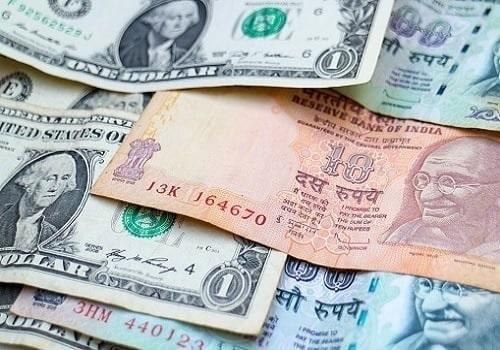
Rupee Rebounds from Record Low vs US Dollar
The Indian rupee has been on a rollercoaster ride in recent times, with its value fluctuating wildly against the US dollar. However, on Monday, the rupee rebounded from its record low against the greenback, thanks to a combination of factors. The recovery was driven by firm domestic equities, a weak American currency, US dollar selling by banks, and timely intervention by the Reserve Bank of India (RBI). Additionally, optimism surrounding a potential US-India trade deal by the end of the year also supported rupee sentiments.
The rupee had been under pressure in recent weeks, touching a record low of 83.02 against the US dollar on Friday. However, on Monday, it staged a strong recovery, appreciating by 0.5% to close at 82.58 against the dollar. The rebound was driven by a strong rally in domestic equities, with the benchmark Sensex surging over 1% to close at a new high. The positive sentiment in the stock market helped boost investor confidence, which in turn supported the rupee.
Another factor that contributed to the rupee’s rebound was the weakness in the US dollar. The dollar index, which measures the value of the greenback against a basket of six major currencies, fell by 0.2% on Monday. This weakness in the dollar made the rupee more attractive to investors, leading to a surge in demand for the Indian currency.
Banks also played a crucial role in the rupee’s recovery, as they sold dollars to support the Indian currency. The RBI, which has been closely monitoring the currency market, also intervened to prevent excessive volatility in the exchange rate. The central bank’s timely intervention helped to stabilize the rupee and prevent it from falling further.
The possibility of a US-India trade deal by the end of the year also supported rupee sentiments. The two countries have been engaged in talks to resolve their trade differences, and a deal could help boost India’s exports and attract more foreign investment. This, in turn, could help support the rupee and reduce the country’s trade deficit.
The rupee’s rebound is a welcome relief for the Indian economy, which has been facing headwinds in recent times. A weak rupee makes imports more expensive, which can fuel inflation and reduce the competitiveness of Indian exports. On the other hand, a strong rupee can make imports cheaper and increase the competitiveness of Indian exports.
The RBI has been taking steps to support the rupee and prevent excessive volatility in the exchange rate. The central bank has been selling dollars from its foreign exchange reserves to support the rupee, and has also raised interest rates to attract more foreign investment. These measures have helped to stabilize the rupee and prevent it from falling further.
In conclusion, the rupee’s rebound from its record low against the US dollar is a positive development for the Indian economy. The recovery was driven by a combination of factors, including firm domestic equities, a weak American currency, US dollar selling by banks, and timely intervention by the RBI. The possibility of a US-India trade deal by the end of the year also supported rupee sentiments. As the Indian economy continues to grow and attract more foreign investment, the rupee is likely to remain stable and may even appreciate further in the coming months.
The Indian government has also been taking steps to support the rupee and reduce the country’s trade deficit. The government has been promoting exports and reducing imports, which has helped to narrow the trade deficit. The government has also been investing in infrastructure and promoting foreign investment, which has helped to boost economic growth and create jobs.
The rupee’s rebound is also a reflection of the Indian economy’s resilience and its ability to withstand external shocks. The Indian economy has been facing headwinds in recent times, including a slowdown in global trade and a rise in oil prices. However, the economy has remained resilient, and the rupee’s rebound is a testament to this resilience.
In the coming months, the rupee is likely to remain stable and may even appreciate further. The Indian economy is expected to continue growing, and the government’s efforts to promote exports and reduce imports are likely to bear fruit. The possibility of a US-India trade deal by the end of the year is also likely to support the rupee and attract more foreign investment.
Overall, the rupee’s rebound from its record low against the US dollar is a positive development for the Indian economy. The recovery was driven by a combination of factors, and the rupee is likely to remain stable and may even appreciate further in the coming months.
News Source: https://investmentguruindia.com/newsdetail/rupee-rebounds-from-record-low-against-the-us-dollar-on-monday605065





